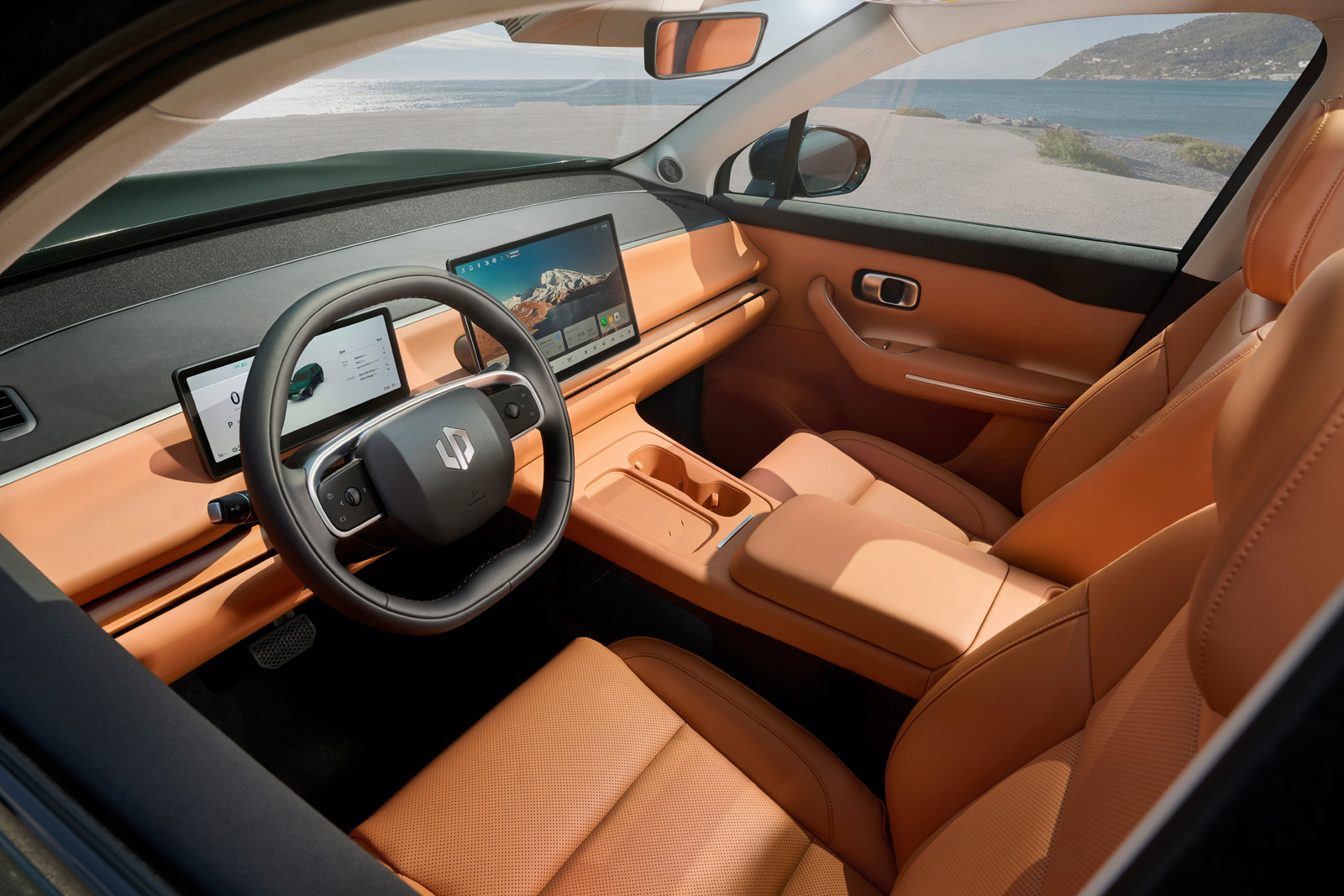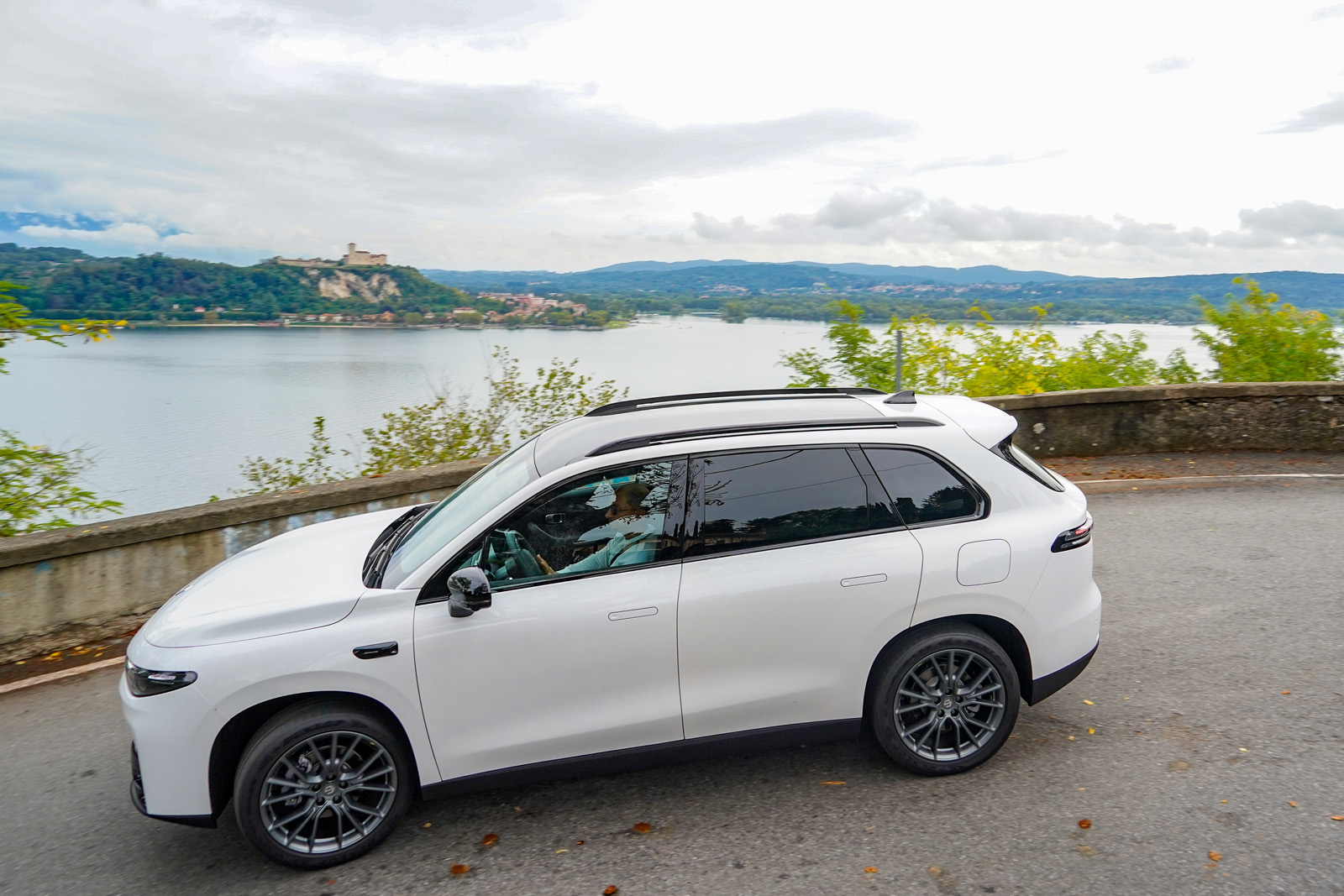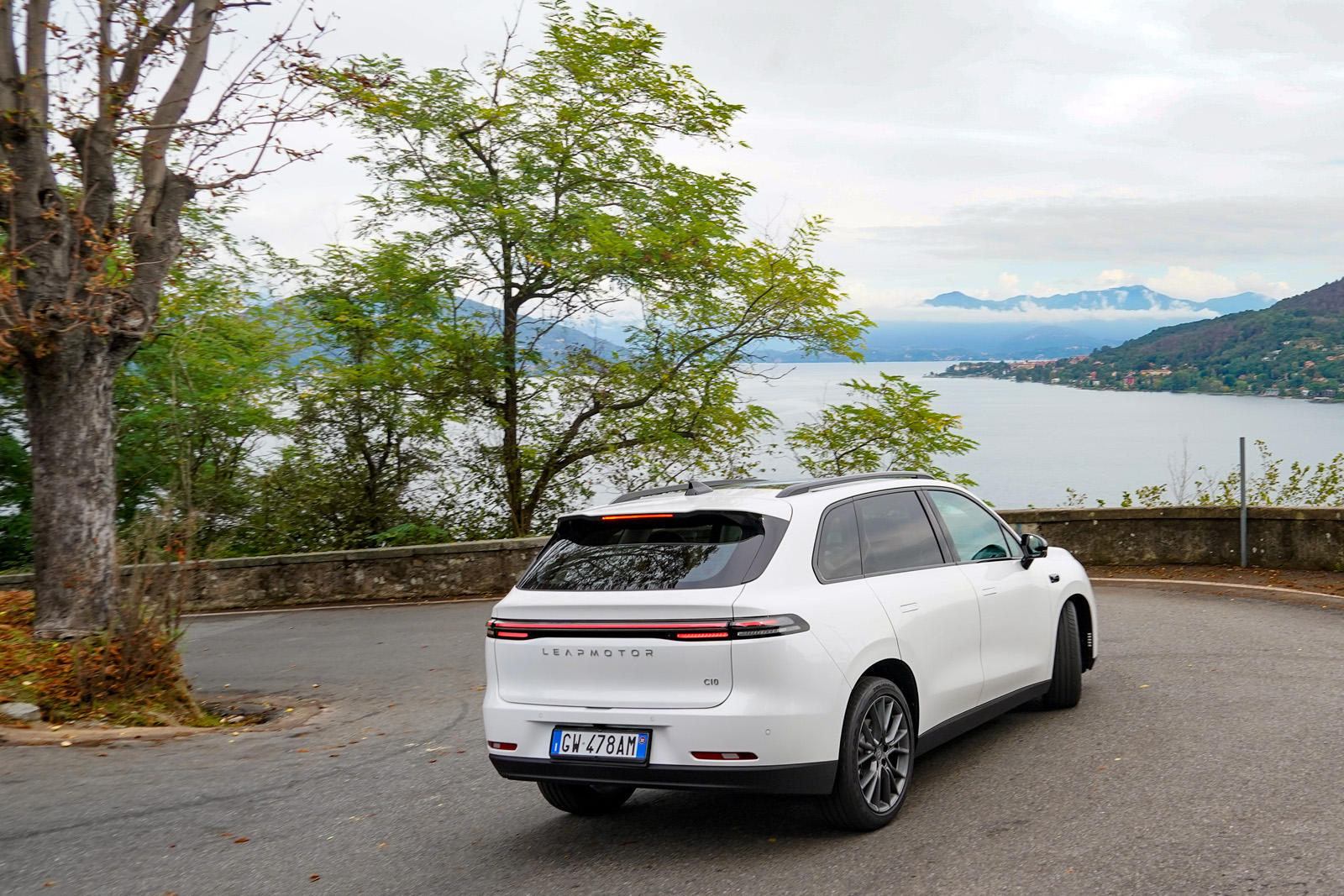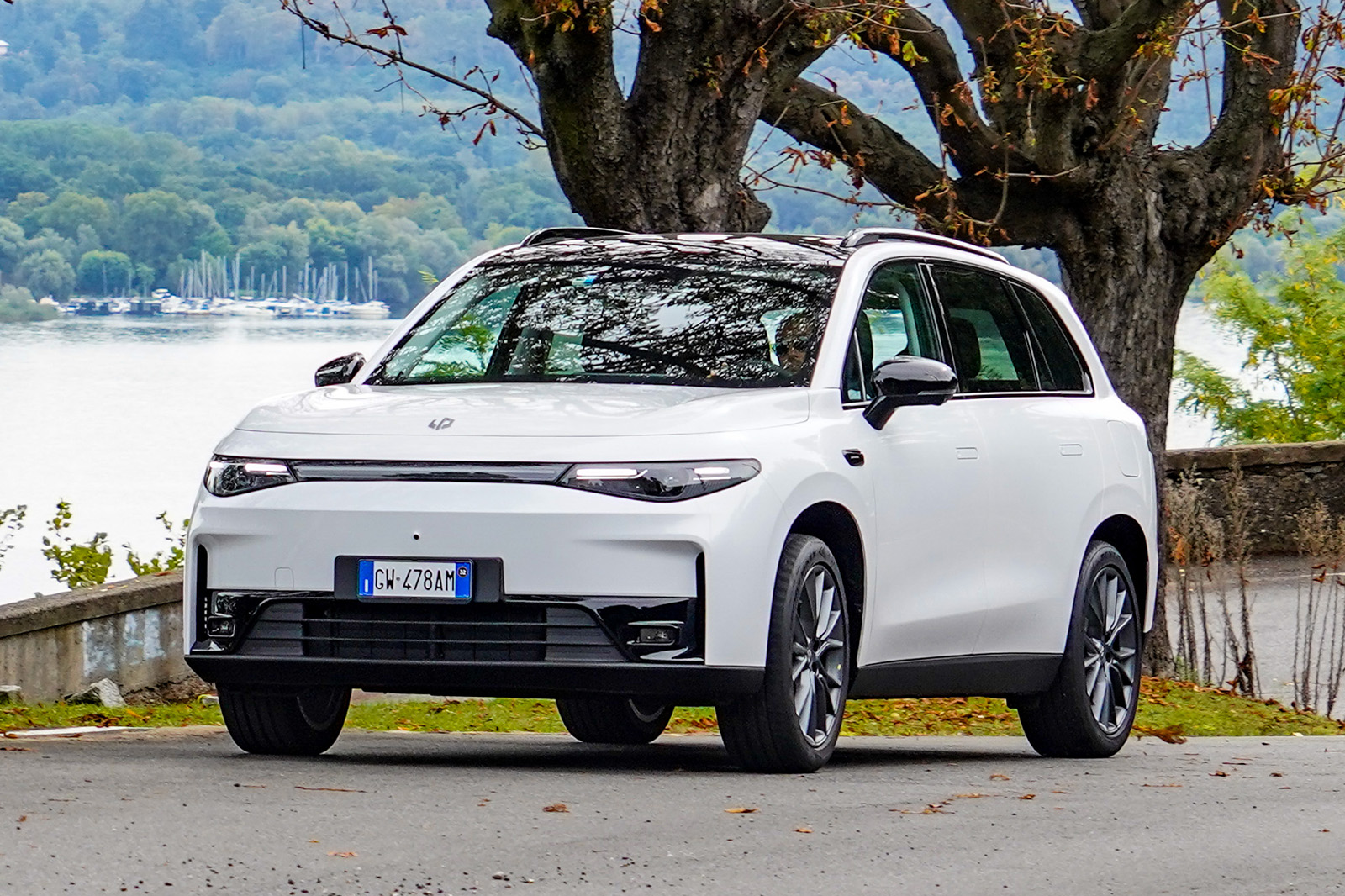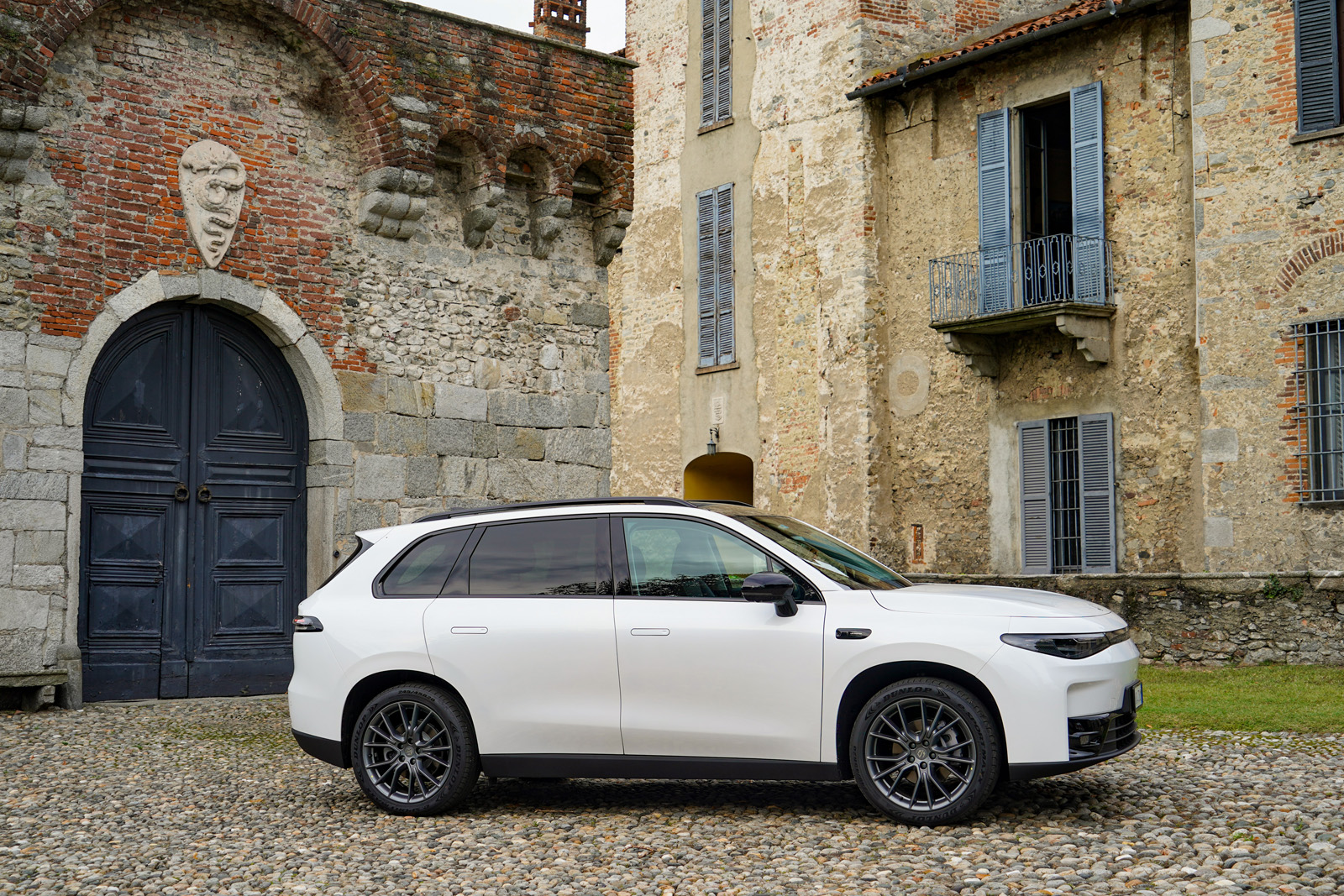Leapmotor’s claim that its construction method offers outstanding cabin space is certainly borne out when you step inside. It offers miles of leg room in the rear, even behind a tall driver, and nor is head room likely to be a problem.
I did have to be shown how to step inside, though: the C10 doesn’t have a key fob, but rather a credit card that you tap on a certain spot on the door-mirror housing to unlock the car. You really don’t want to clout it against anything, then…
I also had to ask how to adjust the wing mirrors: there’s a menu buried somewhere in the 14.6in touchscreen infotainment system that transforms the Tesla-style rollers on the steering wheel into adjusters.
Usually, the one on the right controls your audio, while the left one does… nothing. Honestly, we tried moving it every which way while driving the C10 to no avail. We also couldn’t work out how to activate the adaptive cruise control, even though its existence was clearly signalled in the 10.3in digital dial display.
All this is indicative of a car that relies far too heavily on its touchscreen and in many ways isn’t intuitive to Europeans.
Want to activate or deactivate your seat heating or ventilation? Press the little seat icon at the bottom of the touchscreen. Want to adjust the temperature or fan? Press the air-con icon. Want to adjust the driving mode? Press the settings icon, then scroll through three or four menus. So on and so forth.
The system is able to receive over the-air-updates, so we can only hope that Leapmotor accepts these criticisms and acts accordingly – although there’s only so much it can do without redesigning the dashboard, of course.
I did try to instead use the ‘intelligent voice assistant’ via one of the few buttons on the steering wheel, but the AI failed to understand me each time. Amusingly, it thought I was saying “hate these seats” and not “heated seats”!
‘Hate’ is far too strong a word, but adjustable lumbar support is a sorry omission in a car this expensive, and the synthetic leather upholstery isn’t the nicest we’ve ever touched. Nor are the other interior materials, come to think of it: most of it is a soft, grey plastic, while the bits of the doors that look like microfibre are actually hard and rough.
Like the passenger space, the boot is generous, at 435 litres, or 1410 litres with the rear seats folded down. Its floor lifts up in two sections, the one nearest to you containing a tyre repair kit and the one furthest away your charging cables – better than nothing but obviously much less convenient than a frunk.





































